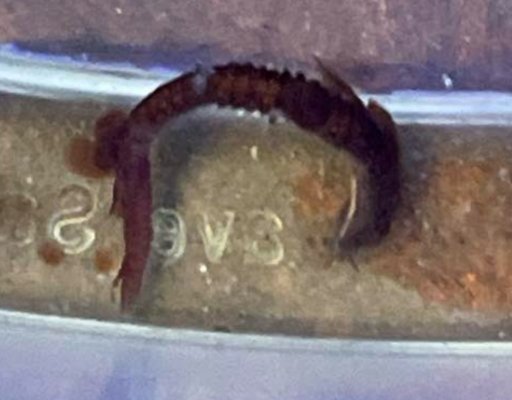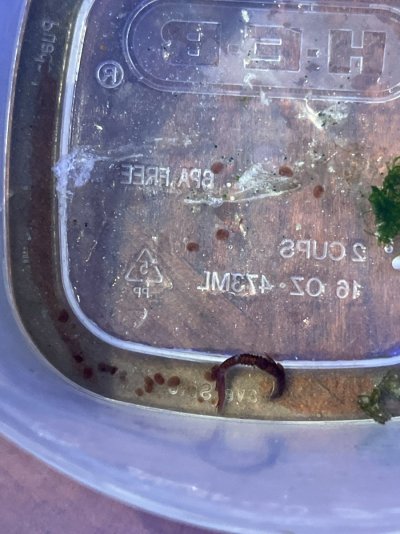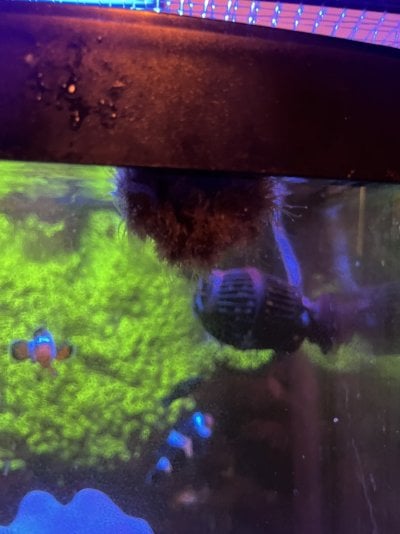Navigation
Install the app
How to install the app on iOS
Follow along with the video below to see how to install our site as a web app on your home screen.
Note: This feature may not be available in some browsers.
More options
You are using an out of date browser. It may not display this or other websites correctly.
You should upgrade or use an alternative browser.
You should upgrade or use an alternative browser.
Pest ID
- Thread starter N11morales
- Start date
-
- Tags
- critter id help
- Tagged users None
What kind of urchin do you have? It may be a commensal species of polychaete.anyone have an idea?
It was on a tuxedo urchin. I had 2 large "halloween/decorated" pincushion urchins. Both of those urchins died recently. I didn't think to check them for worms. I thought they passed due to their size and not enough food available. They were softball size urchins.What kind of urchin do you have? It may be a commensal species of polychaete.
Hmm. Interesting, as I'm not aware of polychaetes that interact meaningfully with Tuxedo Urchins.It was on a tuxedo urchin. I had 2 large "halloween/decorated" pincushion urchins. Both of those urchins died recently. I didn't think to check them for worms. I thought they passed due to their size and not enough food available. They were softball size urchins.
Honestly, I'd be tempted to move the urchin with the worm into a small, temporary holding tank - making sure to feed the urchin properly in the tank - and observe (if possible) both what the worm eats and how they interact, as a number of urchins have commensal polychaetes that live in/on them without being a problem, and I'm not aware of any polychaetes that prey on or parasitize urchins at the moment that I recall.
If the interaction seems to be innocent (i.e. if there doesn't seem to do any damage to the urchin after a few days), then I'd call it good and add them both back to the DT.
i already threw it away lol but it did release some eggs while i grabbed the urchin so probably will have some growing in the tank eventually. Also im not sure if it was harming my urchins. I did have 2 die that were super healthy before hand. but i do realize my tank was getting pretty clean.Hmm. Interesting, as I'm not aware of polychaetes that interact meaningfully with Tuxedo Urchins.
Honestly, I'd be tempted to move the urchin with the worm into a small, temporary holding tank - making sure to feed the urchin properly in the tank - and observe (if possible) both what the worm eats and how they interact, as a number of urchins have commensal polychaetes that live in/on them without being a problem, and I'm not aware of any polychaetes that prey on or parasitize urchins at the moment that I recall.
If the interaction seems to be innocent (i.e. if there doesn't seem to do any damage to the urchin after a few days), then I'd call it good and add them both back to the DT.
all those little dots are eggs that came off the worm. I figured it was some type of flatworm due to the eggs looking similiar to flatworm eggs i have seen before.
That's interesting - brooding polychaetes are not common in our aquaria that I've seen.all those little dots are eggs that came off the worm. I figured it was some type of flatworm due to the eggs looking similiar to flatworm eggs i have seen before.
maybe somthing else then?That's interesting - brooding polychaetes are not common in our aquaria that I've seen.
No, it's definitely a polychaete (you can see the body segments and parapodia in the first pic; you can technically see some of the chaetae too, but they're barely visible in the pic and super blurry).maybe somthing else then?
Similar threads
- Replies
- 8
- Views
- 268
- Replies
- 9
- Views
- 256




















